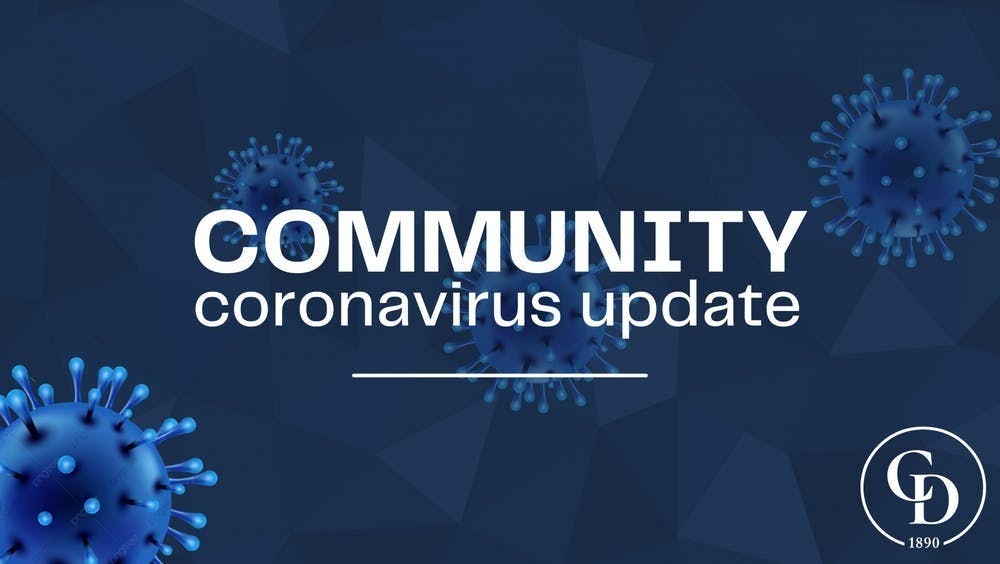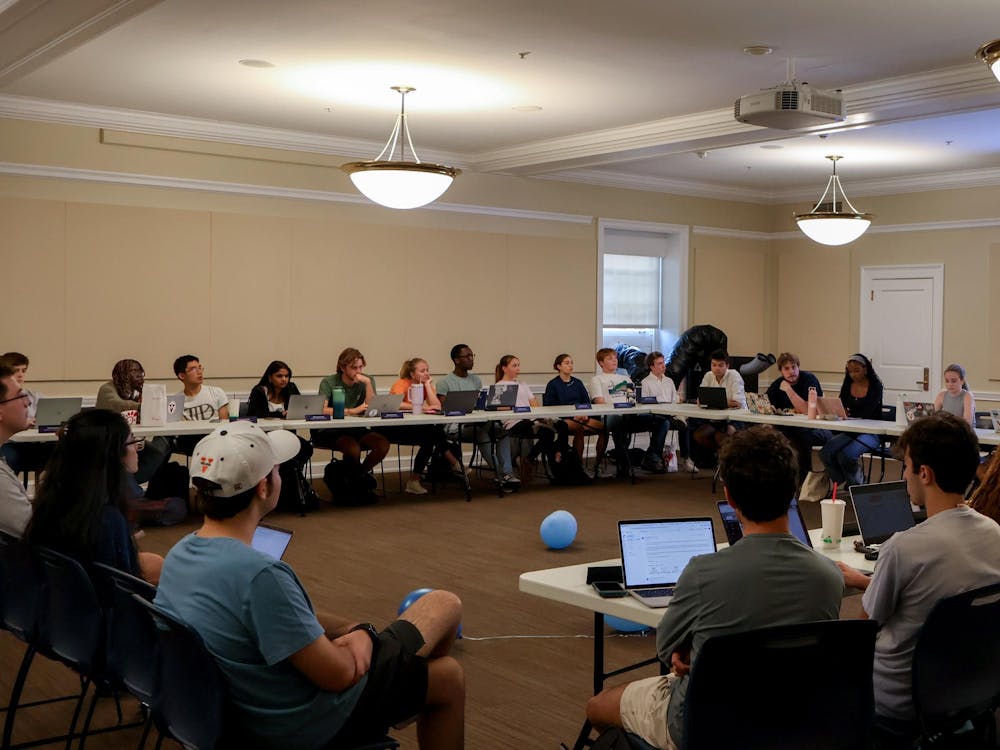Cases of COVID-19 on Grounds continue to steadily decline after last week’s spike, with 26 new cases reported Wednesday. Twenty-four of the cases reported were students and two were among faculty and staff. Despite the decline, there are still 912 active cases in the University community.
The 1,539 total cases during the spring semester will soon pass the 1,548 total cases for the entirety of the fall semester.
Cases among faculty and staff remain low, with a weekly average of one case per day this week, in comparison to three the week of Feb. 14. The weekly average for student cases substantially declined to 34 average cases per day between Sunday and Wednesday in comparison to 109 average cases per day last week.
Meanwhile, active student cases are still high despite the decline in new cases per day. Wednesday, the 24 new cases found among students brought the total number of active student cases to 888. Student cases makeup 1,320 of the total 1,539 cases reported since Jan. 1
After an increase in positivity rate from 1.70 percent Feb. 15 to 4.09 percent Friday, the positivity rate appears to have leveled off some — Wednesday’s positivity rate was 2.19 percent.
The new case seven-day average has also declined this week, with seven-day averages of 110.9 Sunday, 102.0 Monday, and 76.6 Tuesday. The new case seven-day average for Wednesday was 55.4.
The decline comes after an announcement last Tuesday banning all in-person gatherings until reevaluation Friday. Recreational facilities — such as gyms — and libraries also closed, but dining halls would remain open with grab-and-go options as well as limited indoor seating available for the duration of the period.
Per University policy, students are still required to report for testing weekly. 10,699 tests were administered Wednesday. Since Aug. 17, 182,314 total tests have been administered by the University Health System. Students who fail to comply with mandatory testing are subject to disciplinary action with increasing severity.
Faculty and staff can undergo voluntary asymptomatic testing at any point. If a community member believes they have been exposed to COVID-19, they should immediately contact U.Va. Health for further instructions on how to safely get tested.
The total number of hospitalizations related to COVID-19 at U.Va. Health remains high, with nine new admissions yesterday, bringing the total in-house hospitalizations to 43.
Students living in on-Grounds housing who come into contact with an infected individual are required to quarantine in designated University-run quarantine locations while those living off Grounds who are exposed are required to quarantine in their residence for 14 days. As of Thursday afternoon, 34 percent of quarantine beds and 20 percent of isolation beds are occupied. This quarantine occupancy shows a sharp decrease from the 50 percent quarantine occupancy reported Monday while there was a slight increase from the 18 percent isolation occupancy reported at the same time.
Governor Ralph Northam announced the easing of some previous restrictions Wednesday, including allowing outdoor social gatherings of up to 25 people, an increase from the previous restriction of 10 people. Other relaxations of the executive order include allowing the sale of alcohol until midnight as opposed to the previous 10 p.m. limit as well as allowing indoor and outdoor seating at 30 percent capacity.
The announcement came as new cases per day in Virginia continue to decline — from 4,309 on Jan. 30 to 1,907 on Wednesday. As of Wednesday, Virginia had experienced 568,946 cases and 7,963 deaths from COVID-19.
According to the Blue Ridge Health District’s COVID-19 portal, the region — which includes Charlottesville and Albemarle County — reported 75 new cases Wednesday, bringing the total number of cases to 13,067. 4,796 cases were reported in Albemarle County while 3,550 were reported in Charlottesville.
The Virginia Department of Health launched a website Tuesday allowing any Virginia resident to pre-register for the COVID-19 vaccine.







